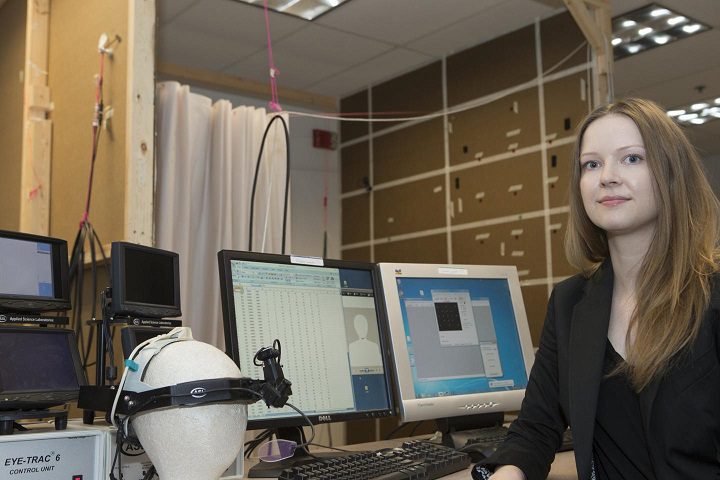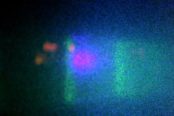[dropcap style=”font-size:100px; color:#992211;”]M[/dropcap]aybe it’s infantile feeding programming, or maybe there’s a deeper attraction to the the sine-wave purity of female geometry rooted in our quantum datawave.
We are ALL lecherous creeps.
A new analysis is being called the first of its kind to examine visual attention and gender in social groups, and how those observations can influence the behavior of who’s getting the looks. The research by Mary Jean Amon, a doctoral student in the University of Cincinnati’s psychology program, is published in the current online issue of the journal, Frontiers in Psychology.
Amon’s study of same and mixed-gender gaze patterns found that women were viewed more frequently and for longer periods of time – even when their photos were blended in groups of both genders – and that the women were viewed more often and for longer durations by both men and women. Amon says the findings emphasize how women can be evaluated in society and how that in turn can have negative impacts on their self-esteem and behavior.
Participants in the study were divided into two groups. The first group involved 100 college-age men and women (50 participants from each gender) who were photographed portrait-style in front of a white background. The second group was represented by 76 college-age students who were informed that they would be taking part in an investigation of psychological responses to visual stimuli, and that they would view random pictures of people, art, landscapes, animals or cartoons.
 University of Cincinnati researcher Mary Jeam Amon is photographed in the motion capture room of UC’s Center for Cognition, Action and Perception.
University of Cincinnati researcher Mary Jeam Amon is photographed in the motion capture room of UC’s Center for Cognition, Action and Perception.
The viewing group was then seated in front of a computer monitor to view the photos. The viewing patterns of the participants were unknowingly being measured by a remote eye-tracking device to record and measure their point of gaze. For viewing, the portrait photos were grouped in different scenarios including single photos and groups of two, four or six photos which varied in gender [quote]women overall were looked
at more frequently… and
they were looked at for longer
durations, and this was the
case for both male and female viewers[/quote]composition. “I compared equal ratios but switched genders,” Amon explains.
“What we found was that women overall were looked at more frequently,” says Amon. “They were looked at first, they were looked at last, and they were looked at for longer durations, and this was the case for both male and female viewers.”
Amon says the findings reflect objectification theory that suggests that women are frequently evaluated by their physical appearance. “This often relates to sexualization or even treating women as mere body parts, and that obviously can hold negative consequences over time,” says Amon. “Short-term effects, for example, can involve lower self-esteem and reduced cognitive functioning. Long-term effects are actually more difficult for women. They actually start objectifying and evaluating themselves in terms of their physical appearance.”
Demographics of the Study
Fifty female and 50 male participants were photographed for the study. Participants ranged in age from 18-26 with an average age of 19. Eighty percent of the participants identified as white, 12 percent biracial, 7 percent black and 1 percent Asian.
The group that viewed the photos was represented by 39 women and 37 men. Participants ranged in age from 18-48 and the average age was 19. Eighty-two percent of the participants identified as white; 7 percent black; 5 percent Asian; 4 percent biracial and 3 percent Hispanic.
About the Technology
Amon’s research was conducted in UC’s Center for Cognition, Action and Perception in the Department of Psychology. The center is used to explore the dynamics of cognition and perception-action. Amon’s study used the center’s Applied Science Laboratory’s D6 remote eye-tracking device. The technology captures corneal reflections to calculate real-time point of gaze trajectory. Gaze duration, frequency and sequence of viewing were calculated for each of the 76 viewers.
“Viewers were looking at the photos on a computer monitor and the technology was a desk-mounted device that sat under the monitor. It’s about the size of an old VHS player,” explains Amon. “The technology shoots a laser where the retina is located and also records head movements, then calibrates gaze to what is on the screen.”
Source: University of Cincinnati
Photo: Lisa Ventre/University of Cincinnati

Some of the news that we find inspiring, diverting, wrong or so very right.




















